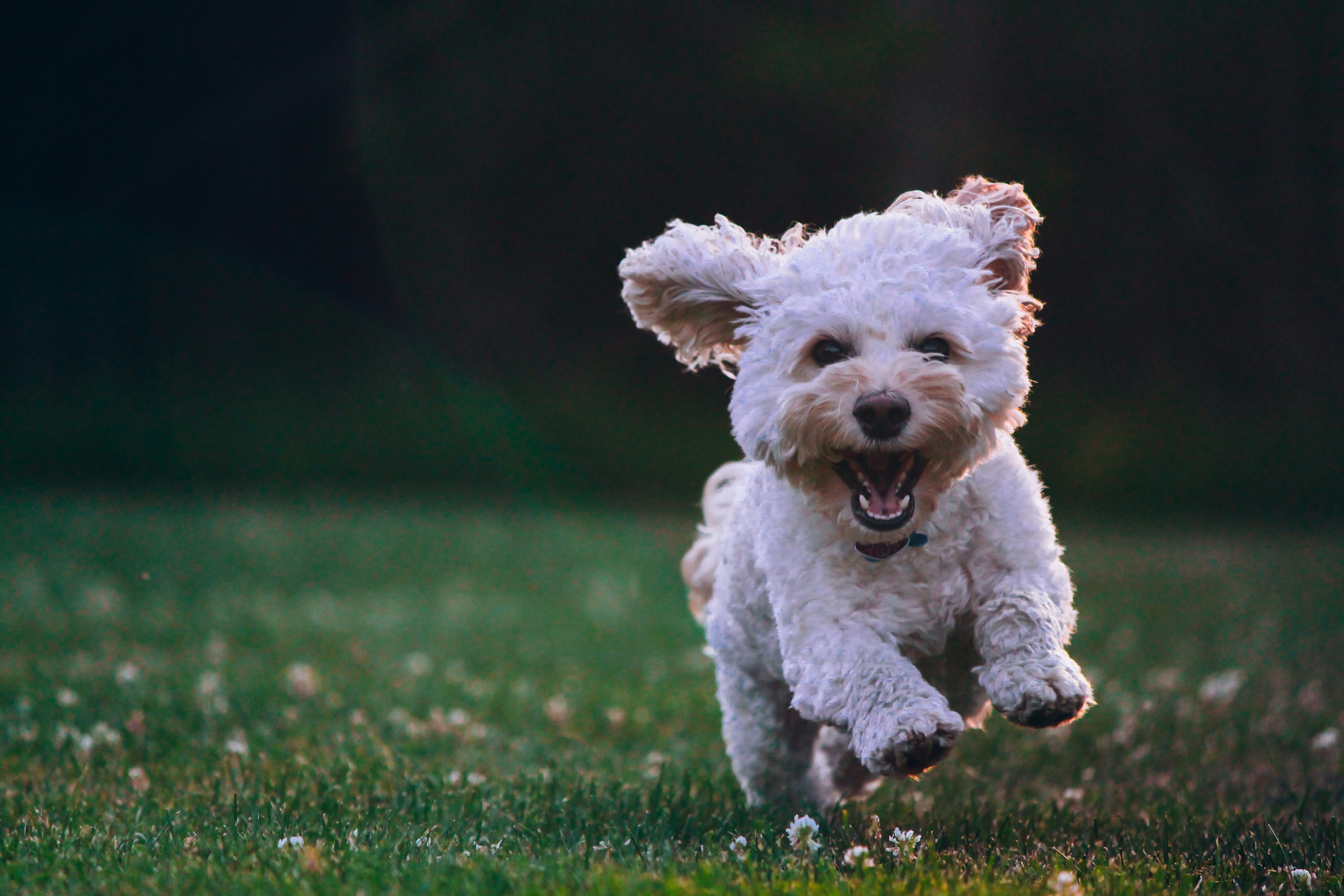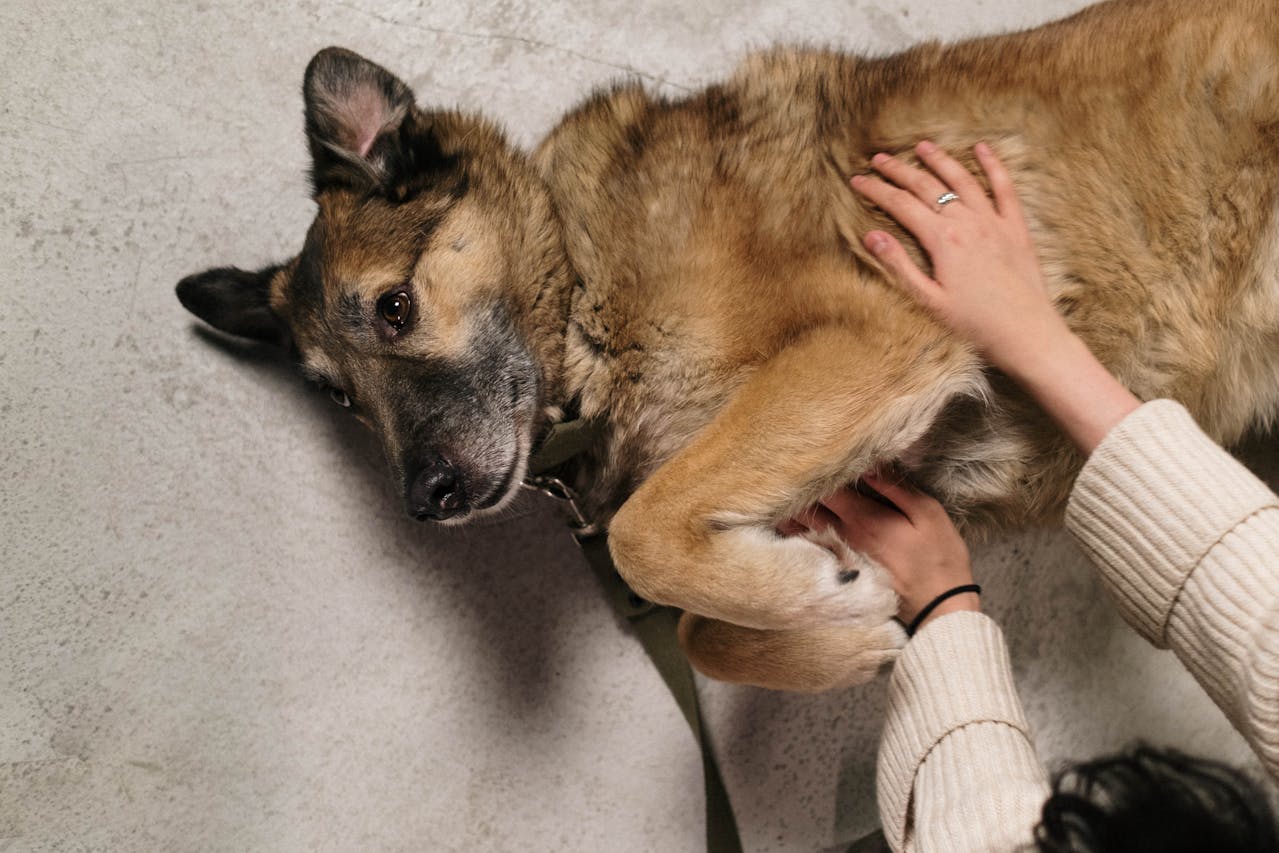Signs That Your Dog Is Healthy and Happy

Aside from regular checkups with your family veterinarian, including essential wellness assessments such as an annual blood panel, fecal testing, and urine analysis, there are observable signs that can reassure pet owners of their dog's well-being. Here are six critical indications that your dog is enjoying good health.
Fresh Breath
A dog's oral health is a window to their overall well-being. Breath that is relatively odor-free and teeth without excessive tartar buildup are positive signs of good health. Issues such as gingivitis or periodontitis can adversely affect a dog's vital organs and lead to severe health problems. Periodontitis, in particular, is a condition impacting the supporting structures of the teeth, often caused by the accumulation of food debris, plaque, and tartar. Foul-smelling breath might indicate oral melanoma, a highly aggressive form of cancer. Routine dental care is vital in enhancing a pet's overall health and longevity by detecting problems early on.
Shiny, Clean Coat
Healthy dogs typically exhibit a shiny, clean coat thanks to natural oils and regular shedding. Dogs generally only require frequent bathing if they've gotten dirty. However, if your dog is frequently licking, chewing, or scratching, it could signify skin irritation, allergies, bug bites, or fleas. These behaviors can also indicate your dog's discomfort, necessitating a veterinary checkup.
Consistent Lean Weight
Excessive weight in pets is a top concern for veterinarians, as it can lead to various health issues such as diabetes, heart and lung diseases, joint problems, skin conditions, and different types of cancer. If you notice a significant weight loss in your dog, it's advisable to seek a checkup, as this could indicate underlying health problems. Dogs should ideally maintain a consistent, lean weight, with a visible tapering of the waist toward the hips (though this may vary by breed). Portion control for meals and treats is essential for maintaining a healthy pet, and it's advisable to consult with your veterinarian regarding your dog's ideal meal plan.
Regular Bladder and Bowel Movements
Your dog's bowel movements can provide insights into their digestive health. Healthy stools should be free of blood, mucus, worms, eggs, chalky white discoloration, black, tarry appearance, greasy coating, or diarrhea. Any changes might be due to diet alterations, stress, allergies, parasites, infections, toxic substance ingestion, or various underlying health issues, including pancreatitis, cancer, or inflammatory bowel disease. Monitoring the color of your dog's urine is also essential. Transparent yellow urine indicates good health, while dark or bright yellow urine can signal dehydration. Other colors may suggest jaundice, gallbladder problems, or urinary tract infections. If your dog starts urinating indoors or off their designated area, it could indicate distress due to a health problem, warranting a thorough checkup.
Alert, Engaged Interest
A thriving dog displays enthusiasm for spending time with their family, eagerly greeting you at the door, seeking playtime, and showing a keen interest in their surroundings. It may signify underlying health issues if you notice your dog becoming more solitary, disengaged, or sleeping excessively. Behavioral changes are often the primary indicators that alert pet owners to potential health concerns. Pay close attention to any shifts in your dog's behavior and promptly schedule a veterinarian appointment.
Clean, Odor-Free Ears
Healthy dogs generally have clean ears devoid of waxy buildup, discharges, or unpleasant odors. While it's normal for a dog's ears to get dirty, regular cleaning is recommended to prevent ear infections. Ignoring ear cleanliness can lead to ear infections, the second most common reason for dog vet visits in 2015, and can cause considerable discomfort. Clean ears also contribute to maintaining a dog's average body temperature. An unmistakable sign of an ear infection is foul-smelling ears, sometimes resembling the scent of yeast. If you suspect your dog has an ear infection, schedule a checkup with your veterinarian. Other symptoms may include head shaking and pawing at the ear.
If you have questions about your dog's health or are concerned that an issue may be present, don't hesitate to contact your veterinarian immediately. Remember, your dog can't always express when something is wrong. If you observe any signs raising concerns about your pet's health, scheduling a checkup is always a good idea.
Signs of a Happy Dog
A High and Waggy Tail: A happy dog's tail is typically held high and wagging, one of the most recognizable signs of canine happiness.
Relaxed Ears: Happy dogs have relaxed ears, not flattened or tense against their head. Upright ears often indicate alertness, whether they're feeling happy or focused.
Relaxed Body: A content dog has a relaxed posture with loose shoulders, soft eyes without intense fixation, and a sense of ease in their movements. They may even exhibit some wiggly or floppy behavior.
Playfulness: Happy dogs are more likely to engage in play and energetic activities. The "play bow" posture clearly indicates their joyful mood.
Seeking Affection: A content dog enjoys human company and may approach you for attention, often leaning into your hand when you pet them.
Signs of an Unhappy Dog
Low or Tucked Tail: An unhappy or stressed dog may tuck their tail between their legs instead of holding it high. Remember that a wagging tail isn't always a sign of happiness; a slow or low wag can indicate fear or insecurity.
Tense Body: Unhappy dogs appear anxious in their body language, often shrinking away, lowering their head, and avoiding eye contact. Extreme stillness can signal extreme discomfort.
Ears Pinned Back: If a dog is stressed or anxious, their ears may be flattened against their head.
Turning Away: When unhappy with a situation, a dog may turn their head away from you or other people. Some may offer a quick lick as a signal before doing so.
Appeasement Behavior: Unhappy dogs may exhibit appeasement behaviors, such as rolling onto their back stiffly, excessive lip licking, or "yawning." These actions signify discomfort and a desire to de-escalate the situation.
Hiding or Walking Away: Dogs may hide behind objects or leave the area when stressed. Allowing them this space is essential as they communicate their need for a timeout.
Signs of Aggression in Dogs to Be Aware of:
Aggression in dogs can occur when they feel incredibly threatened, frightened, or cornered. Watch for these warning signs:
Stiff Tail: An aggressive dog may have a stiff, trembling tail instead of a relaxed wag. Some might tuck their tail behind them.
Alert Body Position: Aggressive dogs often stand tall with a stiff body, head raised and pointed toward the perceived threat. Alternatively, they might cower while baring their teeth or shift their weight backward to prepare for a possible confrontation.
Ears Forward or Flat: Their ears may be forward or pulled flat against their head, indicating heightened alertness or fear.
Intense Eye Contact: An aggressive dog will maintain direct eye contact with humans or other dogs, often with a fixed, unwavering stare. In such cases, it's essential to stop interaction immediately until the dog calms down.
Baring Teeth: Growling and showing teeth are signs of aggression. Never ignore these signals; they can escalate to dangerous bites if the dog feels threatened.
Avoid Forcing: If your dog shows signs of discomfort or aggression, avoid forcing them into situations that make them anxious. Respecting their comfort zone is crucial for a positive relationship.
Consult a Vet or Behaviorist: If your dog displays regular signs of anxiety or aggression, consult a veterinarian to rule out underlying medical issues. If there's no medical cause, consider seeking guidance from an accredited behaviorist to address behavioral concerns.
Understanding your dog's emotions and respecting their signals is vital for a happy and harmonious relationship.
Get insurance plans with wide-ranging coverage options













